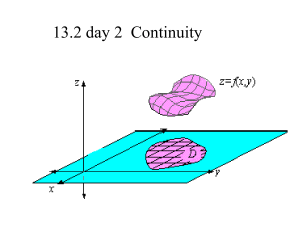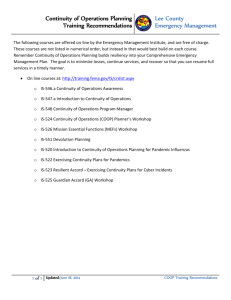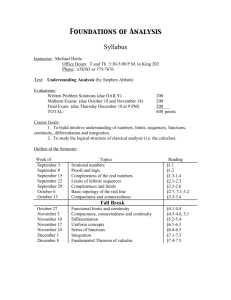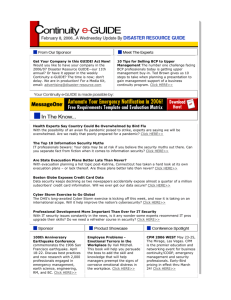Planning for Information Security
advertisement
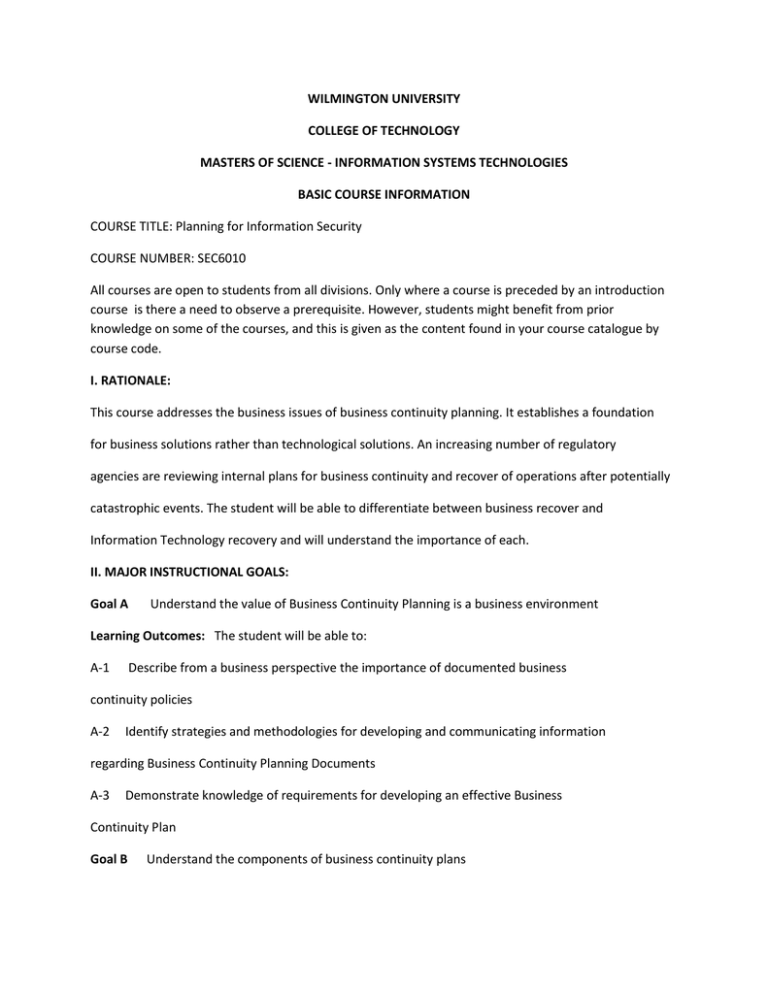
WILMINGTON UNIVERSITY COLLEGE OF TECHNOLOGY MASTERS OF SCIENCE - INFORMATION SYSTEMS TECHNOLOGIES BASIC COURSE INFORMATION COURSE TITLE: Planning for Information Security COURSE NUMBER: SEC6010 All courses are open to students from all divisions. Only where a course is preceded by an introduction course is there a need to observe a prerequisite. However, students might benefit from prior knowledge on some of the courses, and this is given as the content found in your course catalogue by course code. I. RATIONALE: This course addresses the business issues of business continuity planning. It establishes a foundation for business solutions rather than technological solutions. An increasing number of regulatory agencies are reviewing internal plans for business continuity and recover of operations after potentially catastrophic events. The student will be able to differentiate between business recover and Information Technology recovery and will understand the importance of each. II. MAJOR INSTRUCTIONAL GOALS: Goal A Understand the value of Business Continuity Planning is a business environment Learning Outcomes: The student will be able to: A-1 Describe from a business perspective the importance of documented business continuity policies A-2 Identify strategies and methodologies for developing and communicating information regarding Business Continuity Planning Documents A-3 Demonstrate knowledge of requirements for developing an effective Business Continuity Plan Goal B Understand the components of business continuity plans Learning Outcomes: The student will be able to: B-1 Describe the major components of a Business Continuity Plan B-2 Identify steps needed to select the necessary components for a Business Continuity Plan. B-3 Demonstrate knowledge of processes to identify and select the components included in a Business Continuity Plan Goal C Understand the process needed to identify business activities Learning Outcomes: The student will be able to: C-1 Describe tools and methods to use to list key business components C-2 Identify steps to take to gather information needed to list key activities C-3 Demonstrate knowledge of analysis processes needed to identify business activities Syllabus is sole property of Wilmington University Goal D Understand how to use risk analysis to prioritize business Continuity activities Learning Outcomes: The student will be able to: D-1 Describe Risk Assessment and its application to business continuity plans D-2 Identify steps needed to assign and document risk D-3 Demonstrate knowledge of tasks to assign and evaluate risk D-4 Demonstrate knowledge of Disaster Recovery implementation III. SUPPLEMENTAL OBJECTIVES: Equip students with a template for basic business continuity planning IV. METHODOLOGY: Teaching method will consist of weekly lectures and written assignments to reinforce tools and methods reviewed in class. Each student will be expected to submit weekly written assignments which will demonstrate understanding of the planning methods. To assist students with research methodologies, an advanced library orientation has been incorporated as part of this course V. CLASS PARTICIPATION: Students are expected to attend class and participate actively and in a positive way. Questions and relevant observations are encouraged and enrich the experience of the entire class. Computers in the classrooms are intended to be used as tools to enhance the students' learning experience. Instant messaging, gaming, emailing, and surfing the web are distractions to the student, the surrounding students, and the instructor and constitute inappropriate behavior. Students are ethically obliged to avoid these and similar practices. VI. CLASS SCHEDULE - OUTLINES – READINGS: A “structured external assignment” will constitute the closing activity for this course. Students will be asked to submit a topic for instructor approval that integrates IT concepts discussed in class into the student’s vocational or educational interests or workaday environment. Ideally, a “planning paper” will result that is topical, and possesses significant utility within the student’s job-related responsibilities or educational/vocational interests. Instructor will include weekly outline to reflect what has to be achieved by the student in the 5 hours Out-of-Classroom project (Structured External Assignment) including submission deadline and grading criteria. Semester = 15 weeks with a reading week at Week 8 Blocks 7 weeks, with a Reading Week between Blocks I and II. = The syllabus must reflect which preliminary reading all students should complete during the week prior to the start of the course.



